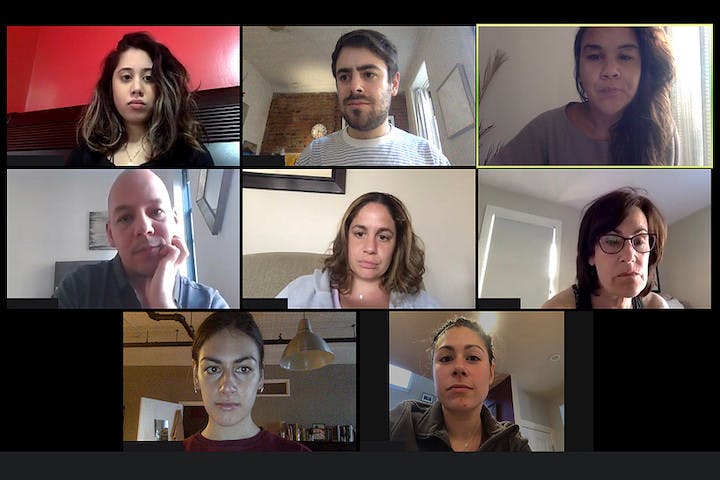In the last two and a half years, employees haven’t just slipped effortlessly into hybrid working [McKinsey finds 58% of US workers say they work remotely for at least part of the week], but they’ve also slipped effortlessly into – for want of a better word – their ‘old clothes’. Smart shirts and ties have been retired. Dresses and jackets hang wedged, and untouched at the back of wardrobes. T-shits and slacks are in.
Yes, we’ve known this for some time. We’ve also heard how HR experts have heralded it as the emancipating moment employees have been waiting for.
It’s been their opportunity – they say – to bring their ‘authentic self’ to work, and be judged by their performance rather than anything else.
Oh, and we’ve even heard how remote working gives those that suffer anxiety being in physical offices respite from their worries.
But more than at this, Ritu Bhasin, the best-selling author of The Authenticity Principle, claims HRDs think zoom meetings have solved something else: Appearance-based bias.
Appearance-based bias isn’t something that’s written a whole lot about – but it’s a bias that directly touches ethnicity and gender-based bias, and is a lot more pervasive than people often give it credit for.
“There’s absolutely no doubt appearance-based bias is worse in-person,” she tells TLNT in our exclusive interview. “There’s now an expectation that people aren’t going to be wearing business suits in their home. People are free to wear what they want; they’re free to be themselves, and yes, that’s one of the big reasons why remote working is so popular.”
Don’t think your work is done
But according to Bhasin, HRDs who now think appearance-based bias is suddenly solved are not out of the woods just yet.
In fact (ironically perhaps), with dress largely out of the equation, she argues remote working may actually intensify other visual differences – such as skin color or cultural differences.
“Not only do appearance-based biases still exist through Zoom, but they can be strengthened by it,” she says. She adds: “Age is a particularly powerful one – where older looking people can be seen as less dynamic or their ideas are less ‘fresh’ than if they were in an office and moving around and seen more in the whole. When all you do is look at a person in a small window on a screen, there can be a tendency for this to be exaggerated” She continues: “Worse still though, wholly new appearance based biases now enter the fray – such as the environment people are in – why someone might not have a room that’s been designated their office for example.”
Growing academic research suggests these biases create real problems – everything from the cultivation of ‘in-groups’ (to the exclusion of others), where invites only get extended to those people who are ‘like them’; or the tendency to see/create patterns where none exist.
In addition to this, The London School of Economics recently identified other issues – including the concept of group polarization, where certain members of a group move towards a more extreme point in whatever direction is indicated by the members’ pre-deliberation tendency. Other problems comprise the ‘heightened spotlight effect’ – a tendency for some people to tendency to always feel like they are “in the spotlight”; and ‘selection bias’ – where people self-select into options depending on their characteristics.
If these weren’t problems enough though, arguably the bigger problem is how to tackle such biases.
The need to be more deliberate
According to Bhasin there is a now an absolute need for HRDs to be “much more deliberate in thinking about the potential for appearance bias.
She says: “The problem with appearance-based bias is that it’s not the fault of the employee potentially being judged. They can’t second-guess why, or whether they’re going to be judged for the appearance or their skin colour, or what’s there in the background behind them. Ultimately, we must interrupt what is thought to be professional – which is usually a white-man’s interpretation of what being professional is.”
And her message is abundantly clear that HRDs must no longer tolerate the typical push-back from some, which says we can’t control how we judge people, because it’s built into human evolution.
“This is nonsense,” she claims. “Bias-disruption techniques are out there, and can easily be found. The one thing that can’t be claimed is that there is a lack of resources out there. It’s purely a mindset change that’s needed.”
So what does she recommend? “Appearance-based bias needs to be broken down,” she says. “Most people want access to the same opportunities regardless of how they look. They want to be treated the same. Zoom has done great things to demystify the notion that dressing smartly equals better performance; now we just need other appearance based biases to catch-up, and be similarly put back in their rightful place. When people feel they’re not being judged, believe me, that means everything.”
What you can do:
* Train for acceptability of broadband issues
Appearance-based bias can occur through poor broadband connection. According to the Pew Research Center, 27% of American don’t have high-speed broadband – the absence of which can causes biases to appear linked to assumptions about people wealth/social status.
* Allow the camera to be turned off
Not only does it help support those with ADHD by reducing additional stimuli and visual distractions, but not being on a screen calms those people who are not confidence being on camera.
